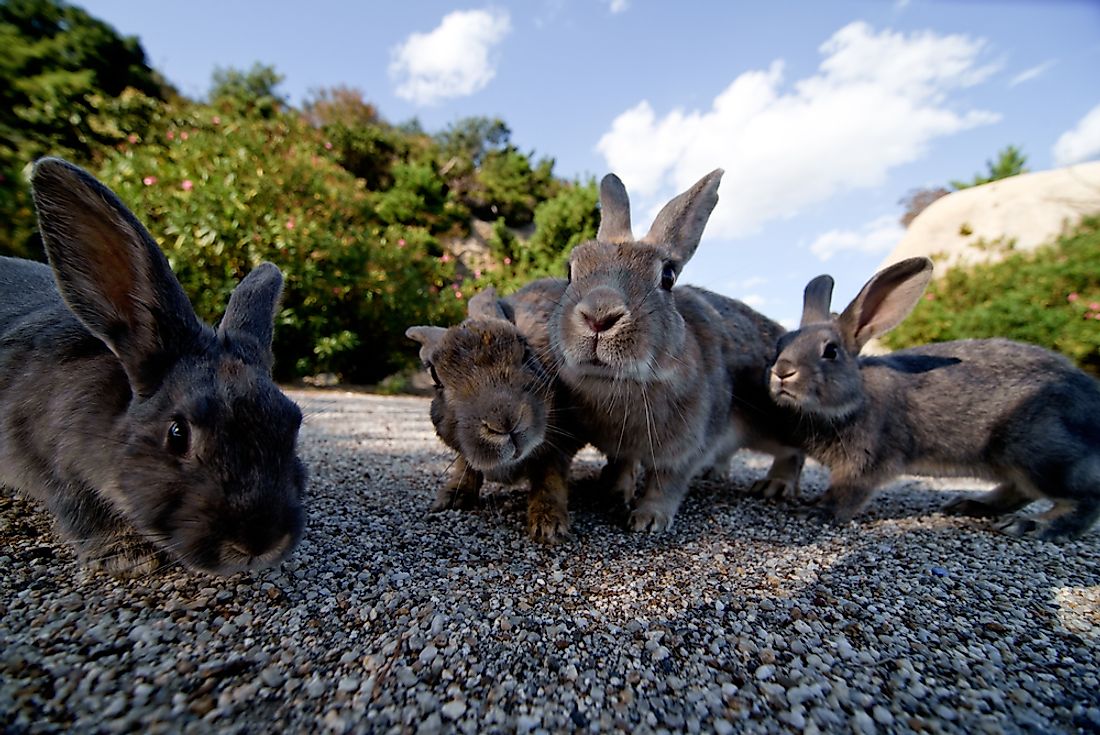What Is Unique About Japan's Okunoshima Island?

The Okunoshima is a very small Island positioned in the Inland Sea of Japan in the city of Takehara, Hiroshima Prefecture. Okunoshima is a unique island since it is widely populated by rabbits, hence the name, ‘Rabbit Island’. It is a small island measuring 2.5 miles round. It is covered in grassy terrain and hosts a beach resort, nature park, museum, and piers. The island is home to 1,000 bunnies that roam in the island with a sparse distribution of human population.
History of Okunoshima Island
The Okunoshima Island was an agricultural land hosting only three families before the Russo-Japanese War. In 1925, the Imperial Japanese Army Institute of Science and Technology commenced a top-secret mission to manufacture chemical weapons, after research revealed that chemical weapons were being manufactured and used by Europe and United States. Although Japan had been a signatory of the Geneva Protocol of 1925, which banned the use of chemical weapons, the manufacture, and storage of weapons was not banned. The Imperial Japanese Army chose the Okunoshima Island due to its proximal geographic location away from Tokyo and other populated regions of Japan.
Under the command of the Japanese Army, the manufacture of the chemicals was set and the secret mission commenced in 1927. A local fish and preservation plant, which had been constructed in the island, was changed into a chemical weapon facility and a toxic gas reactor that produced over six kilotons of mustard gas and tear gas. Residents of the Island were never told of the secret operation. After the end of the war, the plant was demolished and burnt down while the Island was scrapped off the map of Japan.
Origins of Rabbit Island
For decades, the Okunoshima has been nicknamed as the Rabbit Island following the influx of bunnies. Although there are many theories regarding the existence of bunnies in the island, the majority of the people claim that they were let loose after the end of Second World War. During the war, rabbits had been captured and brought to the island as test subjects for the chemical weapons. However, experts believe that after the end of the Second World War, everything pertaining to the chemical plant including the rabbits were killed during the demolition and burning of the plant. It still holds that workers who had been affected during the manufacture of the chemicals set free the rabbits held in captive.
Tourism to Rabbit Island
Today, it is estimated that there are over 1,000 bunnies inhabiting the small island. The influx of the rabbit population is attributed to the strict conservation rules in the island where hunting is prohibited and predators including cats and dogs are banned. Every year, the rabbit population attracts over 300,000 visitors. Although tourists have been encouraging to feed the rabbits, especially in winter, experts claim that majority of the bunnies suffer from diet poisoning as they do not get a high fiber diet essential for their survival. The Japanese Environment Ministry is concerned about the future of bunnies in the island following the influx of tourists, which they claim hinders the rabbits from enjoying their life in the wild. Efforts are underway to deter the excessive artificial intervention and enhance coexistence of the wild bunnies with tourists.











